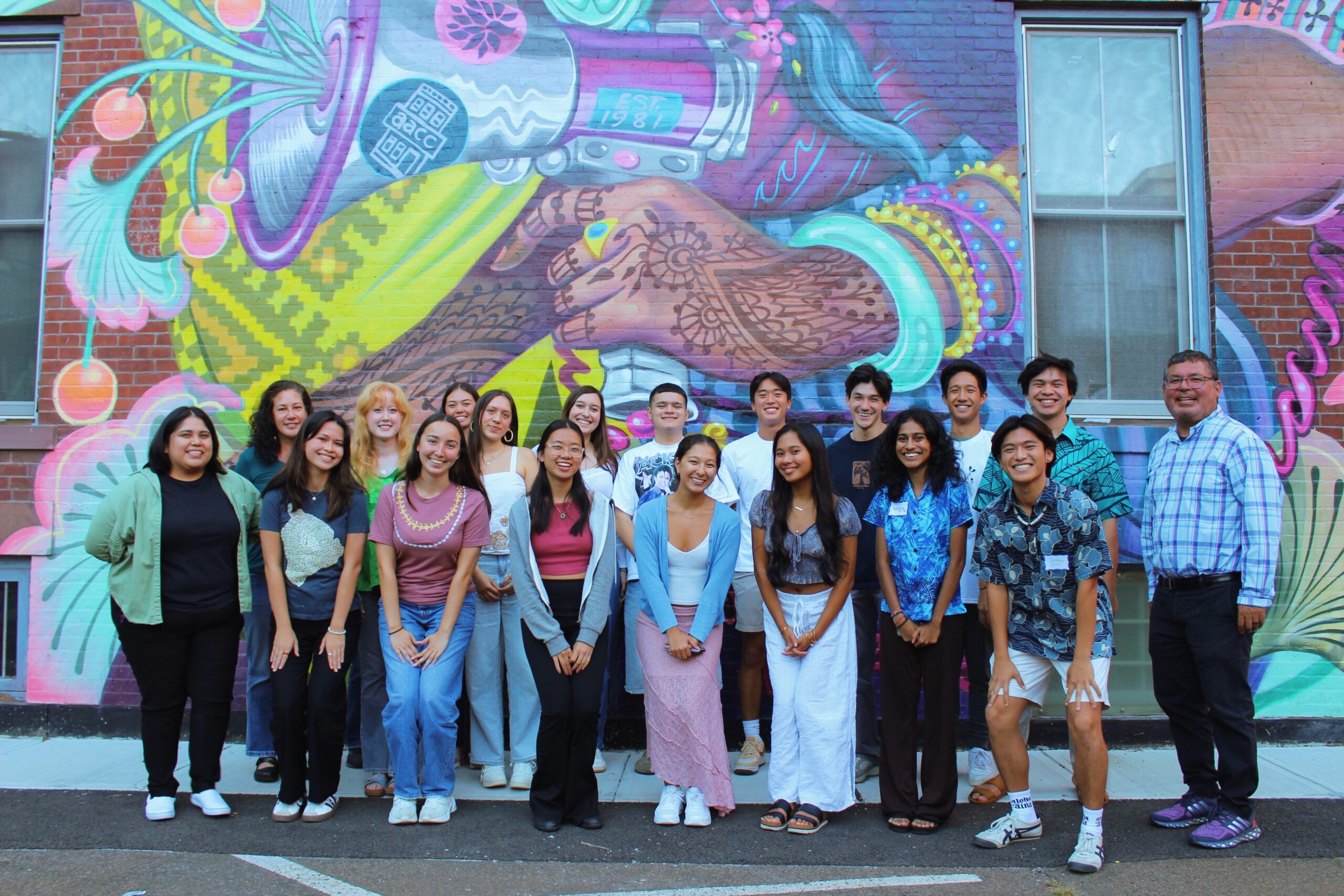University removes Reverend Bingham plaque after student advocacy
Over the summer, the University temporarily removed a plaque describing Reverend Hiram Bingham as a “civilizer” after advocacy by the Indigenous Peoples of Oceania at Yale.

Courtesy of The Indigenous Peoples of Oceania at Yale (IPO)
Before this summer, Schwarzman Center’s rotunda housed a commemorative plaque honoring Hawaii missionary the Rev. Hiram Bingham II, class of 1853. Following advocacy efforts of the Indigenous Peoples of Oceania, a Yale student group, the University temporarily removed the plaque describing Bingham as a “civilizer” while determining the next steps.
The plaque describes Bingham, a Yale alum who ministered to Native Hawaiians, as a “navigator,” “bible translator” and “civilizer.” After discovering the plaque, IPO partnered with the Andover Newton Seminary and Bingham’s family members to negotiate its removal with the Yale administration. The University took down the plaque this summer.
“Yale is a global institution that has impacts globally when it makes those decisions,” Joshua Ching ’26 (Kanaka Maoli), the president of IPO, said. “What we’re hoping to do is make sure that with these legacies that have had ripple effects across the entire world, our repair also ripples across the entire world.”
One of the IPO members brought the plaque to the group’s attention. After learning about the plaque, the student group researched Hiram Bingham II’s legacy across the Pacific, including in Micronesia and Hawai’i, and “opened a can of worms,” according to Meera Mishra ’26 (Fijian).
After being told about the plaque and meeting with IPO members, both Andover Newton Seminary at the Yale Divinity School and some members of the Bingham family were “immediately” supportive of taking down the plaque, Ching said.
Ching emphasized that using the word civilizer is “awful” and “represents a time that both the Pasifika community, but also the Bingham family and also Andover Newton seminary want to move past.”
Though the President’s Committee on Art in Public Spaces recognized the need to address the use of the term “civilizer” in the plaque, Mishra said, there was frustration with their response.
She explained that the committee agreed to take the plaque down but insisted students advise them on the next steps, such as what to replace the plaque and what the University should do. Mishra told the News that while she appreciated their intention for it to be “student-led,” they “should not be the ones having them do all the research” in the process.
Sarah B. Drummond, founding dean of Andover Newton Seminary, met with John Bingham ’61, lineal descendant of Hiram Bingham II, and Katharine M. Preston MFS ’74, MDIV ’00 to introduce the family to IPO and Andover-Newton’s plan to address the Bingham plaque.
John Bingham has remained in constant contact with IPO and hopes to contribute to the larger conversation of repair in any way he can, Ching said.
“The university shouldn’t do it as a matter of trying to just repair but as a matter of trying to uplift through education … the richness of the values that were so disturbed by colonial settlers all over the world, and not just by our country, but everywhere,” John Bingham told the News.
This summer, the plaque was removed without prior notification to IPO members. Mishra told the News she unexpectedly discovered its removal while walking through Schwarzman during the summer. The University spokesperson did not directly answer why they did not inform members of IPO about when the plaque would be removed.
The administration’s lack of acknowledgment after the removal, Mishra said, moved IPO to launch a digital archive campaign to “shed more light” on the process.
A University spokesperson wrote to the News that the Committee on Art in Public Spaces is “grateful to the students who raised this issue.” After consulting with the students, the spokesperson wrote, the committee acted “within the specific scope of its charge, which is narrowly focused on recommendations for campus public art to reflect the mission and diversity of Yale today.”
Ching explained that the digital archive is a way of figuring out what that repair looks like and involving communities back home in the Pacific. It will consist of short, minute-long clips on Instagram that dive into a specific history of the Pacific and Yale. IPO is also planning on creating infographics and informational posts, along with in-person workshops and teach-ins.
“We have to set up the stage now to continue to pressure them. Otherwise, it’s very easy to take down the plaque and then ignore it, and it’s very easy to send remains and ancestral artifacts without making any sort of statement,” Sophie Lau ’25 (Kanaka Maoli) told the News.
Lau has contributed to further research on the relationship between Yale and the Pacific and recently participated in the latest digital archive discussion.
As Yale’s first female Fijian student, Mishra said that she’s researching Yale’s involvement in Micronesia and Fiji to create something in the digital archive addressing that relationship.
“The way that missionization has impacted my own upbringing is something that I am healing through these conversations, which has been super meaningful and has allowed me to restore some sense of hope,” Ching said.
The Indigenous Peoples of Oceania cultural group holds weekly meetings in the Native American Cultural Center on Thursdays from 5:00 to 6:00 p.m.
Correction, Nov. 15: This story has been updated to correct Katharine’s name and class years, as well as John Bingham’s class year.







